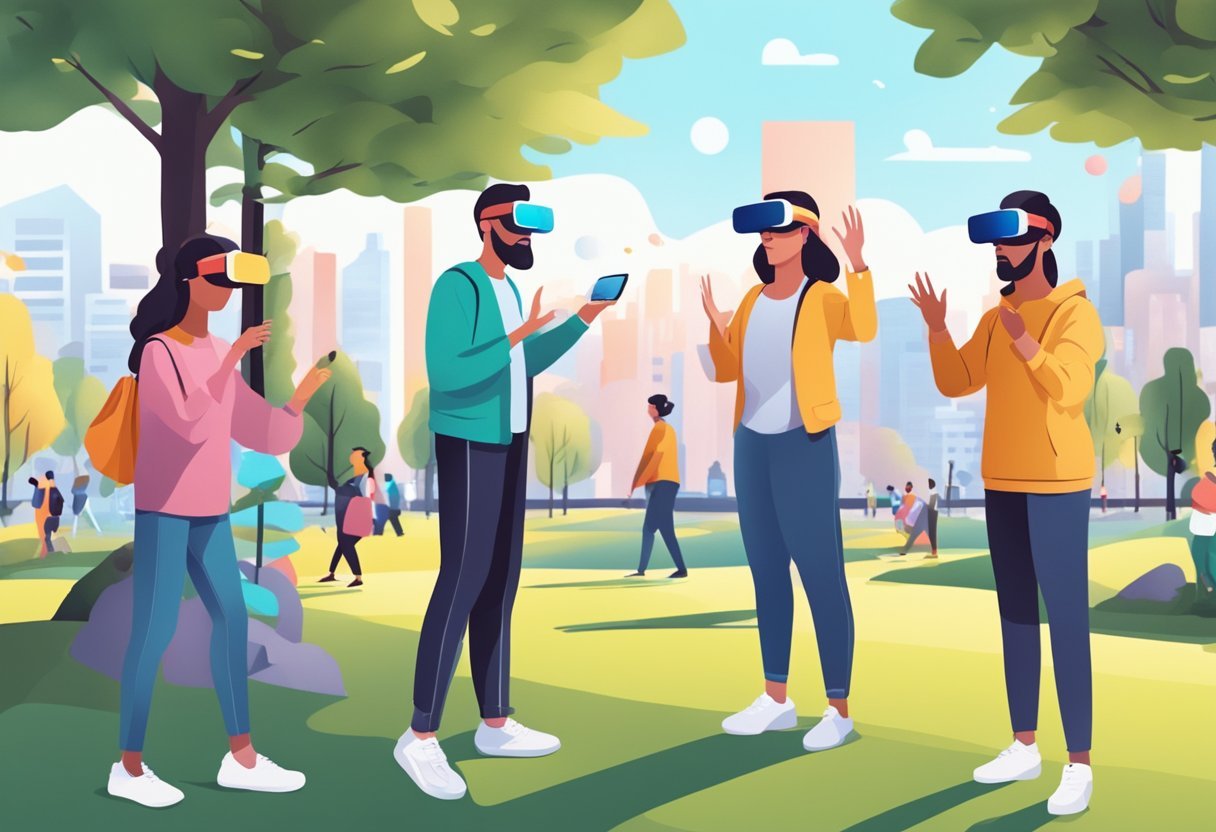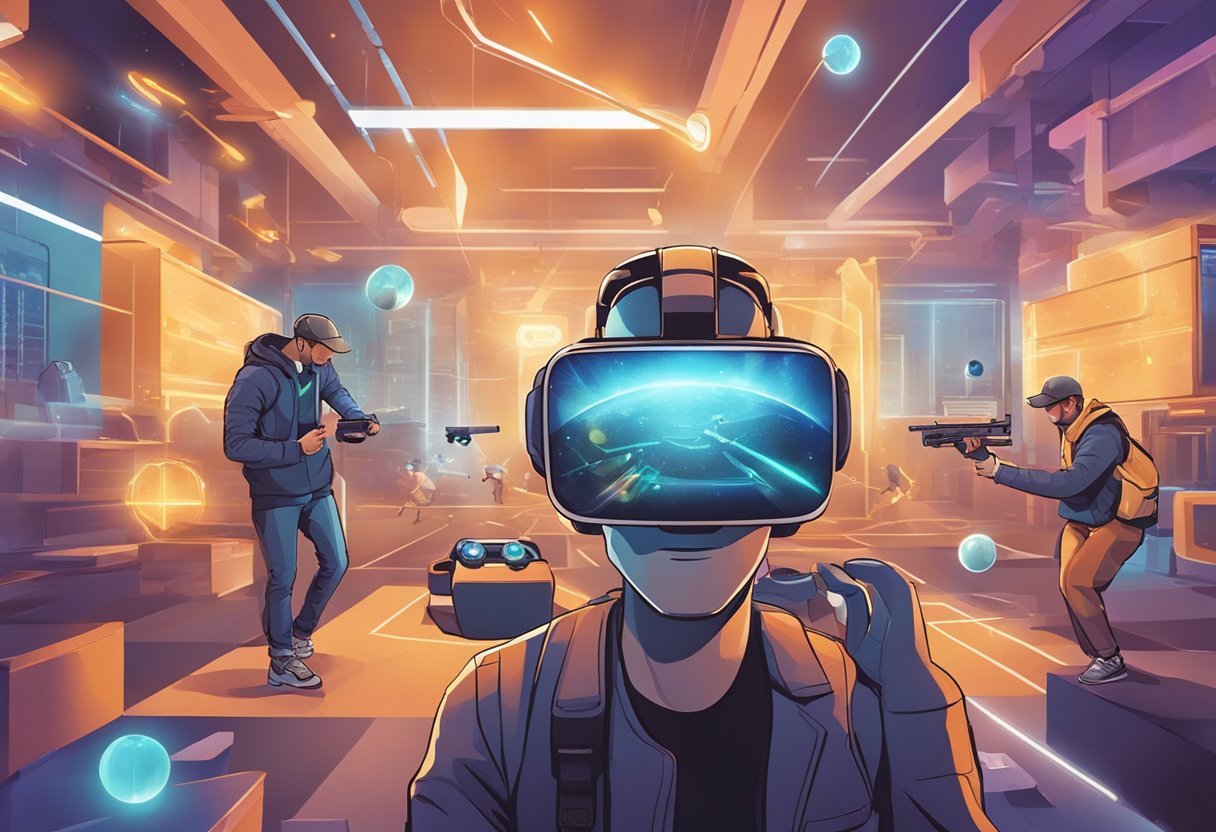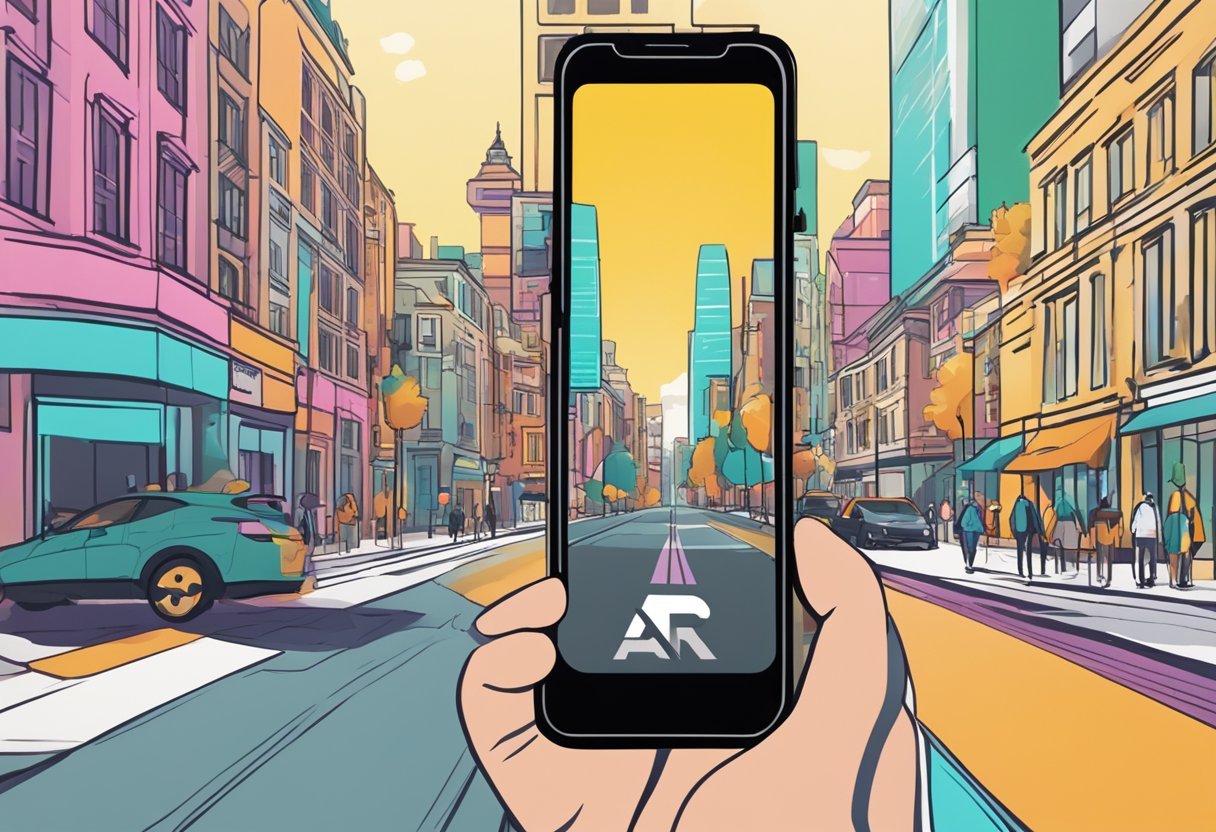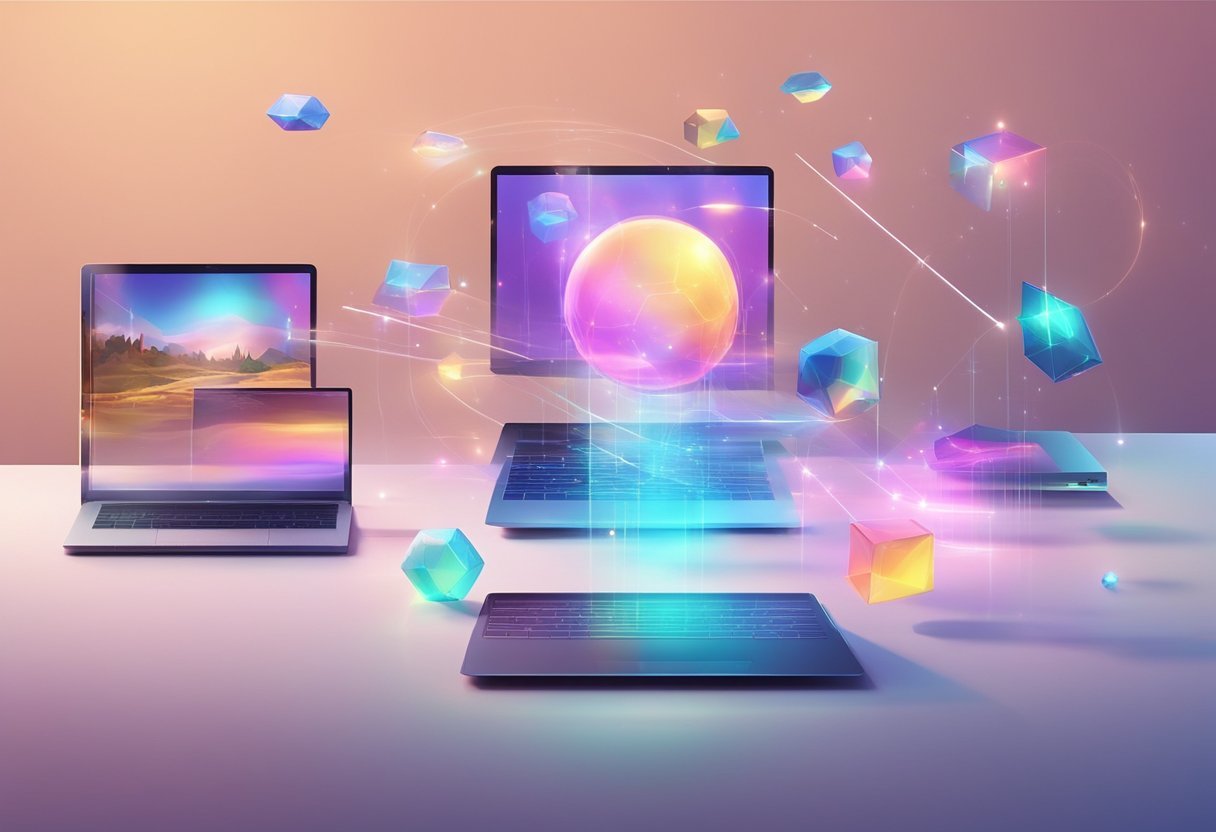Augmented reality (AR) is an emerging technology that has the potential to revolutionize the way students learn. It is an interactive experience that enhances the real world by adding digital elements to it. AR has already made its way into the classroom, providing students with a more engaging and immersive learning experience. In this blog post, I will share with you 15 augmented reality activities that you can try out with your family and friends.
AR is particularly useful in education because it allows students to interact with digital content in a more natural and intuitive way. It enables them to visualize complex concepts, explore virtual environments, and manipulate 3D objects. This not only makes learning more fun and engaging, but it also helps students to better understand and retain the information they are learning.
As AR technology continues to evolve, its potential applications in education are limitless. From science and math to history and literature, AR can be used to create interactive learning experiences that are tailored to the needs and interests of individual students. In this article, we will explore the practical applications of AR in education, as well as its future potential and frequently asked questions.
15 Augmented Reality Activities
- Virtual home design
- AR-enhanced navigation
- Interactive gaming
- AR in education and training
- Virtual try-ons
- AR tourism
- Augmented reality storytelling
- AR for maintenance and repair
- AR-enhanced shopping experiences
- AR in healthcare
- AR business cards and networking
- AR art installations and exhibitions
- AR treasure hunts and scavenger hunts
- AR in sports training and analysis
- AR-enhanced museum visits
Virtual Home Design
Virtual home design is an augmented reality activity that allows users to visualize furniture and decor in their own homes before making a purchase. By using AR apps, customers can see how different products look in their space, check if the size and scale are correct, and experiment with various styles and layouts.
This activity not only enhances the shopping experience but also helps in making more informed decisions, reducing the likelihood of returns due to size or style mismatches. Virtual home design is revolutionizing the interior design industry by making it accessible and fun for users to personalize their living spaces.
AR-enhanced Navigation
AR-enhanced navigation is an augmented reality activity that overlays digital information onto the physical world to assist with wayfinding. This can include directions, points of interest, and contextual information about nearby locations. By using the camera on a smartphone or AR glasses, users can see navigation cues directly in their line of sight, making it easier to follow routes in unfamiliar environments. This type of AR is particularly useful in urban exploration, hiking, or when traveling to new places, providing a more intuitive and engaging way to navigate.
Interactive Gaming
Interactive gaming with augmented reality creates immersive experiences that blend the digital and physical worlds. Games like Pokémon GO are prime examples, where players explore their real-world surroundings to find and capture virtual creatures.
AR gaming increases physical activity and social interaction as it often requires players to move around and sometimes collaborate with others. This activity showcases the potential of AR to create new forms of entertainment that are both fun and engaging, offering a fresh twist on traditional gaming.
AR in Education and Training
Augmented reality in education and training provides an interactive learning experience by bringing complex concepts to life. Students can visualize and manipulate 3D models of anatomical structures, historical artifacts, or scientific phenomena, leading to a deeper understanding of the subject matter.
AR also offers a hands-on approach to training, allowing professionals to simulate real-life scenarios and practice skills in a safe, controlled environment. This activity enhances the learning process, making it more engaging and effective for learners of all ages.
Virtual Try-ons
Virtual try-ons are an augmented reality activity that allows consumers to try on clothes, accessories, or even makeup virtually using their smartphone or computer. This technology provides a convenient way for shoppers to see how products will look on them without the need to physically try them on, saving time and improving the online shopping experience. Virtual try-ons are increasingly being adopted by retail brands to reduce return rates and increase customer satisfaction.
AR in Tourism
AR in tourism enhances the travel experience by providing tourists with interactive and informative content about their surroundings. Through AR apps, travelers can point their devices at landmarks to receive historical information, audio tours, or even see reconstructions of ancient sites. This activity enriches the sightseeing experience, making it more educational and enjoyable for visitors as they explore new destinations.
Augmented Reality Storytelling
Augmented reality storytelling is an activity that transforms the way stories are told and experienced. By using AR, storytellers can add a layer of interactivity and immersion to their narratives, allowing audiences to engage with the story elements in a three-dimensional space. This can be used in books, marketing campaigns, or standalone experiences, providing a novel way to connect with audiences and bring stories to life.
AR for Maintenance and Repair
AR for maintenance and repair is an activity that assists technicians and engineers in performing complex tasks. By overlaying digital information, such as schematics or step-by-step instructions, onto the physical equipment, workers can complete their tasks more efficiently and with fewer errors. This application of AR is particularly useful in industries such as aerospace, automotive, and manufacturing, where precision and accuracy are crucial.
AR-enhanced Shopping Experiences
AR-enhanced shopping experiences allow customers to interact with products in a virtual space, providing a new dimension to retail. Shoppers can use their smartphones or AR devices to view products in 3D, access additional information, and see how items might fit into their lives. This activity is transforming the retail landscape by merging the convenience of online shopping with the tangibility of in-store experiences.
AR in Healthcare
AR in healthcare is an activity that is revolutionizing medical training, procedures, and patient care. Medical professionals can use AR to visualize complex medical data, overlaying it onto a patient’s body during diagnosis or surgery. It also serves as a powerful educational tool, enabling students to explore human anatomy in 3D. This application of AR can lead to more accurate diagnoses, better surgical outcomes, and enhanced medical education.
AR Business Cards and Networking
AR business cards and networking take traditional networking to the next level by embedding digital content into physical business cards. When scanned with an AR app, the cards can display interactive media, such as videos, portfolios, or links to social profiles. This activity makes networking more dynamic and memorable, leaving a lasting impression on new contacts.
AR Art Installations and Exhibitions
AR art installations and exhibitions offer a new way for artists to express themselves and for audiences to experience art. By incorporating AR, artists can add a layer of digital creativity that interacts with the physical space and the viewer. This activity can make art more accessible and engaging, encouraging wider appreciation and participation.
AR Treasure Hunts and Scavenger Hunts
AR treasure hunts and scavenger hunts are activities that combine the thrill of discovery with the excitement of AR technology. Participants use their devices to find virtual objects or clues in the real world, often learning about their surroundings or solving puzzles along the way. This activity is a fun and educational way to explore public spaces, museums, or even corporate events.
AR in Sports Training and Analysis
AR in sports training and analysis provides athletes and coaches with advanced tools to improve performance. By overlaying data and visual aids onto the training environment, players can analyze their movements, refine their techniques, and better understand their game. This activity offers a high-tech approach to sports training, enhancing the traditional methods of skill development.
AR-enhanced Museum Visits
AR-enhanced museum visits bring a new level of interactivity to cultural institutions. Visitors can use AR to unlock additional content, such as detailed descriptions, historical context, or even animated reconstructions of artifacts. This activity makes museum visits more informative and engaging, especially for younger audiences, and helps institutions to present their collections in a more compelling way.
Augmented Reality in Education

Augmented reality (AR) is a technology that overlays digital information onto the real world. It is becoming increasingly popular in education due to its ability to enhance classroom interactions and engage students in new and exciting ways. In this section, we will explore how AR can be used in education, including the tools and resources available to educators, and how it can be integrated into curriculum planning and lesson delivery.
Enhancing Classroom Interactions
AR can be used to enhance classroom interactions by providing students with a more engaging and interactive learning experience. It allows students to explore and interact with the real world in new and exciting ways, making lessons more memorable and engaging. For example, AR can be used to bring textbook concepts to life, allowing students to interact with 3D models of complex systems or historical events.
AR Tools and Resources for Educators
There are a variety of AR tools and resources available to educators, making it easier than ever to incorporate AR into their lesson plans. CoSpaces, for example, is a tool that allows students to create their own 3D models and explore them in AR. Merge Cube is another tool that can be used to bring AR experiences to the classroom, allowing students to explore 3D models of objects and artifacts.
Curriculum Integration and Lesson Planning
AR can be integrated into curriculum planning and lesson delivery in a variety of ways. For example, it can be used to enhance existing lessons by providing students with additional information and interactive experiences. It can also be used to create new lessons that are specifically designed to take advantage of AR technology.
When planning lessons, educators should consider how AR can be used to enhance student engagement and understanding, and how it can be used to provide students with a more authentic and real-world learning experience.
AR is a powerful tool that can be used to enhance student engagement and understanding in the classroom. With a variety of tools and resources available to educators, it is easier than ever to incorporate AR into lesson planning and curriculum delivery. By using AR technology in the classroom, educators can create a more engaging and interactive learning experience for their students, and provide them with a more authentic and real-world educational experience.
Interactive Learning with AR

Augmented reality (AR) technology has revolutionized the way students learn by creating interactive, engaging, and immersive learning experiences. AR technology allows students to interact with virtual tools, objects, and 3D models in real-time, making abstract concepts more tangible and easier to understand.
3D Models and Virtual Objects
AR technology allows the creation of 3D models and virtual objects that can be used to enhance the learning experience. By using AR, students can visualize complex concepts and interact with virtual objects to gain a better understanding of the subject. For instance, students can use AR to explore the human body, solar system, or historical buildings, among others.
Collaborative Learning and Engagement
AR technology has made it possible for students to collaborate and engage with each other in real-time. By using AR, students can interact with virtual objects and tools, share ideas, and work together to solve problems. This collaborative learning approach enhances engagement, retention, and understanding of the subject.
Gamification of Education
AR technology has also made it possible to gamify education, making the learning experience more fun and engaging. By using AR, educators can create gamified activities that challenge students to solve problems, answer questions, and complete tasks. This approach not only enhances engagement but also improves retention and understanding of the subject.
AR technology has transformed the way students learn by creating interactive, engaging, and immersive learning experiences. By using AR, students can interact with virtual tools, objects, and 3D models, collaborate with each other, and engage in gamified activities. This approach enhances engagement, retention, and understanding of the subject, making AR an essential tool in modern education.
AR Content and Applications

Augmented reality (AR) has revolutionized the way content is created and delivered in the education sector. This section will explore some of the applications of AR in education, including educational apps and platforms, content creation for AR, and immersive media and storytelling.
Educational Apps and Platforms
AR has been used extensively in educational apps and platforms to make learning more interactive and engaging. Apps like Nearpod, Visible Body, and Wonderscope allow students to explore complex concepts in a fun and interactive way. For instance, Nearpod offers a range of AR activities that allow students to explore different parts of the world, while Visible Body allows students to explore the human body in 3D.
Content Creation for AR
Content creation for AR has become increasingly popular in recent years, with a range of tools and platforms available to create AR experiences. One such tool is the Merge Cube, which allows students to explore a range of concepts, including the water cycle and simple machines. Other tools like Quiver, CoSpaces, and Assemblr allow students to create their own AR content, including 3D models and animations.
Immersive Media and Storytelling
AR has also been used to create immersive media and storytelling experiences. Apps like JigSpace and Roundme allow users to explore 3D models of real-world objects and places, while Plantale and WWF Free Rivers allow users to explore the natural world in a new and interactive way. AR has also been used to create immersive storytelling experiences, such as the app Wonderscope, which allows users to interact with characters in a story and become part of the narrative.
AR has transformed the way content is created and delivered in education. With a range of educational apps and platforms, content creation tools, and immersive media and storytelling experiences, AR has made learning more interactive and engaging than ever before.
Practical Applications of AR in Subjects

Augmented Reality (AR) technology has revolutionized the way students learn and interact with the world around them. AR technology can be used in various subjects to enhance the learning experience and make it more engaging and interactive. In this section, we will explore the practical applications of AR in Science and Natural World Exploration, Mathematical Concepts and Geometry, and History and Geography Visualization.
Science and Natural World Exploration
AR technology can be used to explore the natural world and scientific concepts. Students can use AR apps like Merge Explorer, CoSpaces Edu, and CleverBooks to explore the human body and learn about the different systems, organs, and functions.
They can also explore the solar system, planets, stars, and astronomy concepts in a more interactive and engaging way. AR technology can also be used to explore the animal kingdom and learn about different species, habitats, and behaviors.
Mathematical Concepts and Geometry
AR technology can be used to visualize mathematical concepts and geometry in a more interactive and engaging way. Students can use AR apps to explore 3D shapes, angles, and lines. They can also use AR technology to solve problems and equations in a more visual and interactive way.
History and Geography Visualization
AR technology can be used to visualize historical events and geographic locations in a more interactive and engaging way. Students can use AR apps to explore historical sites and artifacts, and learn about different cultures and traditions. They can also use AR technology to explore different geographic locations and learn about different landscapes, climates, and natural resources.
AR technology has a wide range of practical applications in various subjects, including Science, Mathematics, History, and Geography. It can be used to enhance the learning experience and make it more interactive and engaging for students. AR technology is a powerful tool that can help students visualize and understand complex concepts in a more intuitive and interactive way.
Future of AR in Learning Environments
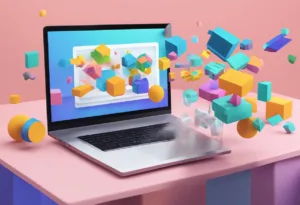
Trends in Educational Technology
Augmented reality (AR) technology has disrupted the education sector by providing students with experiential learning opportunities that are both meaningful and memorable. The future of AR in learning environments is bright, with a growing number of schools and universities incorporating AR technology into their curriculums. The use of AR technology in classrooms has led to a more hands-on approach to learning, allowing students to develop critical thinking and problem-solving skills.
AR technology has also made it possible for abstract concepts to be visualized and understood by students, making learning more engaging and interactive. With the rise of smartphone technology, AR has become more accessible, and the graphics have improved significantly, making the experience more immersive and enjoyable for students.
Preparing Students for a Tech-Driven Future
The future of work is becoming increasingly tech-driven, and it is essential that students are prepared for this reality. AR technology is one way to equip students with the skills they need to succeed in the workforce. By incorporating AR technology into their learning, students can develop skills such as collaboration, creativity, and critical thinking, which are essential in the modern workplace.
AR technology is not just limited to the education sector; it is also being used in manufacturing and medical fields. Medical students can use AR technology to simulate surgeries and procedures, allowing them to gain valuable experience before working on real patients. AR technology is also being used to teach school children about STEAM (Science, Technology, Engineering, Art, and Math) concepts, making learning more engaging and fun.
The future of AR in learning environments is bright, and it is essential that schools and universities incorporate this technology into their curriculums. AR technology provides students with a more hands-on approach to learning, allowing them to develop critical thinking and problem-solving skills. It also prepares them for a tech-driven future, where these skills will be in high demand.
Frequently Asked Questions

What are the best AR apps for enhancing science education?
Science is a subject that can be enhanced by the use of augmented reality. Some of the best AR apps for science education include Merge Cube, Object Viewer, and Museum Viewer. These tools allow students to explore the water cycle, view fossils, examine rocks and gemstones, experiment with simple machines, and more.
How can high school students benefit from augmented reality in their learning process?
Augmented reality can be a valuable tool for high school students. AR can help students visualize complex concepts and make learning more engaging. For example, students can use AR apps to explore historical sites, view 3D models of molecules, and simulate scientific experiments.
What augmented reality tools are available for adult learners?
Adult learners can benefit from augmented reality tools as well. Some popular AR tools for adult learners include Anatomy 4D, which allows users to explore the human body in 3D, and AR Flashcards, which helps users learn new languages.
How can elementary educators integrate AR into their teaching methods?
Elementary educators can use augmented reality to make learning more interactive and engaging for young students. For example, teachers can use AR apps to bring stories to life or to help students visualize math concepts. Some popular AR tools for elementary educators include Quiver, which allows students to color in 2D drawings and then see them come to life in 3D, and AR Flashcards for Kids, which helps young students learn new words.
Can you provide examples of how AR has been effectively used in educational settings?
AR has been effectively used in a variety of educational settings. For example, AR has been used to help students learn about history by bringing historical sites to life. AR has also been used to help students visualize scientific concepts and to help students learn new languages.
What are some innovative ways to incorporate AR into classroom activities?
There are many innovative ways to incorporate AR into classroom activities. For example, teachers can use AR to create scavenger hunts, where students use AR apps to find hidden objects around the classroom. Teachers can also use AR to create virtual field trips, where students can explore different parts of the world without leaving the classroom.

